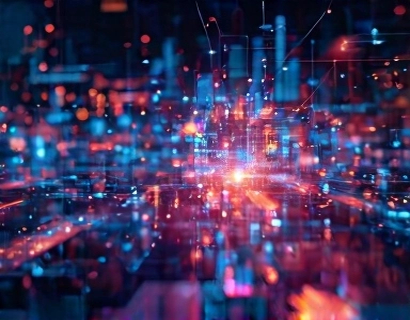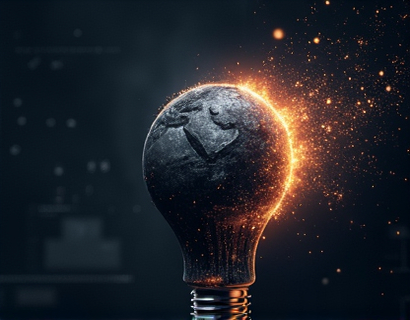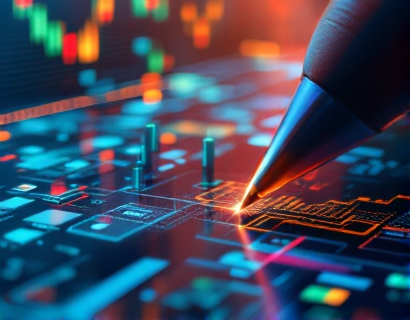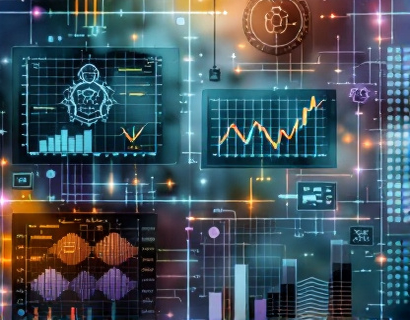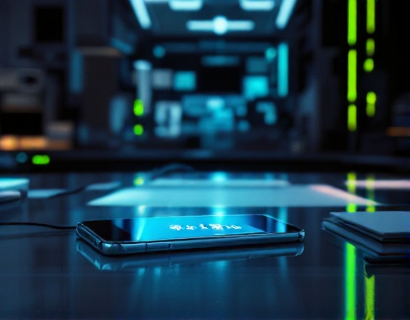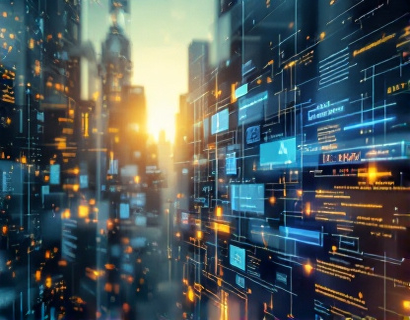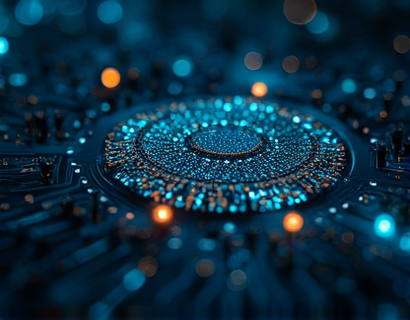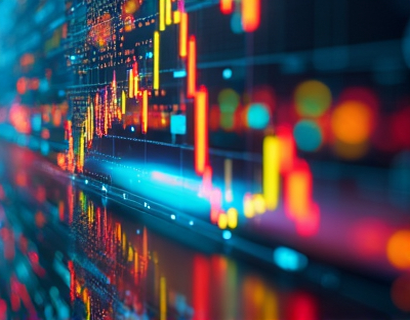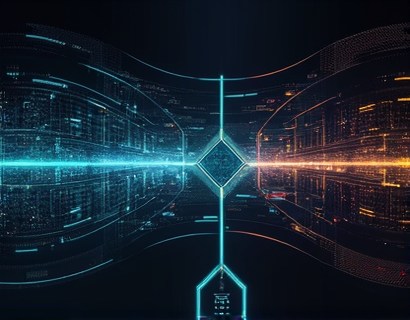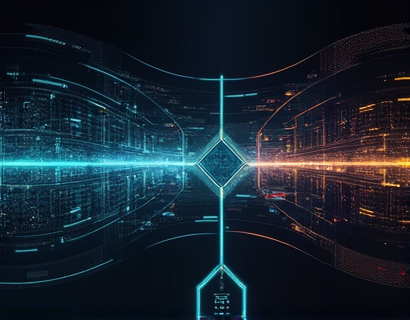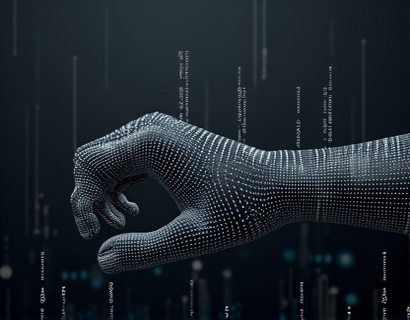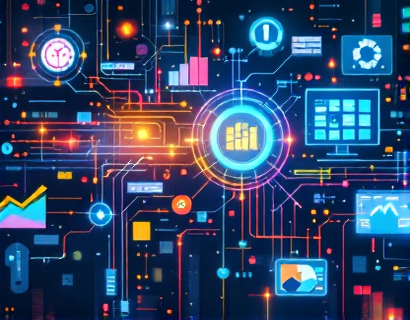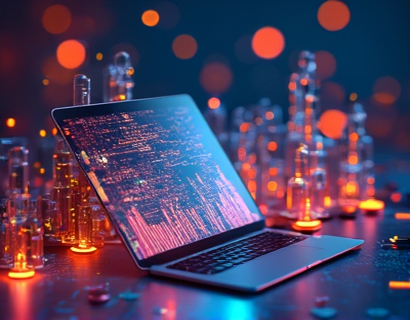AI and Crypto: Pioneering Enhanced Digital Experiences in the Decentralized Era
The intersection of artificial intelligence (AI) and cryptocurrency is giving rise to a new paradigm in digital experiences. This fusion is not just a technological curiosity but a transformative force reshaping the decentralized economy. As we delve into this topic, it's essential to understand the foundational technologies and their individual impacts before exploring how they complement each other to create innovative solutions.
Artificial intelligence, since its inception, has been about mimicking human intelligence processes through machines. From simple rule-based systems to complex neural networks, AI has evolved to handle vast amounts of data, recognize patterns, and make decisions with minimal human intervention. In the context of the digital world, AI has revolutionized everything from search engines to personalized recommendations, making interactions more intuitive and efficient.
Cryptocurrency, on the other hand, represents a shift in how value is stored and transferred. Born out of the need for a decentralized, transparent, and secure form of currency, blockchain technology, the backbone of cryptocurrencies, has opened up new possibilities beyond just financial transactions. Smart contracts, decentralized applications (dApps), and tokenized assets are just a few examples of how blockchain is redefining digital interactions.
The convergence of AI and blockchain is particularly exciting because it combines the strengths of both technologies. AI's ability to process and analyze large datasets can be leveraged on the blockchain to create more secure, transparent, and efficient systems. Conversely, the decentralized nature of blockchain provides a robust framework for AI applications that require trust and security.
Enhancing Security and Trust
One of the most significant benefits of integrating AI with blockchain is the enhancement of security and trust in digital transactions. Traditional systems rely on centralized authorities to verify and secure data, making them vulnerable to breaches and manipulation. Blockchain's decentralized ledger ensures that data is distributed across multiple nodes, making it extremely difficult for any single entity to alter the information.
AI can further bolster this security by detecting and mitigating threats in real-time. Machine learning algorithms can analyze patterns in transaction data to identify anomalies that may indicate fraudulent activity. For instance, AI-powered systems can monitor blockchain networks for unusual patterns that deviate from the norm, triggering alerts and automated responses to prevent potential security breaches.
Moreover, AI can enhance the process of identity verification and access control on the blockchain. Traditional methods often involve cumbersome KYC (Know Your Customer) processes, which can be streamlined using AI-driven biometric verification and behavioral analysis. This not only improves security but also enhances user experience by reducing friction in the onboarding process.
Optimizing Smart Contracts
Smart contracts are self-executing contracts with the terms of the agreement directly written into code. They automate and enforce contractual obligations without the need for intermediaries. However, the complexity of smart contracts can sometimes lead to vulnerabilities and inefficiencies. AI can play a crucial role in optimizing these contracts.
By analyzing the code and identifying potential vulnerabilities, AI can help developers create more robust and secure smart contracts. Machine learning models can be trained on vast datasets of smart contract code to predict and prevent common errors and attacks. This proactive approach ensures that smart contracts function as intended, reducing the risk of costly failures.
Additionally, AI can optimize the execution of smart contracts by dynamically adjusting parameters based on real-time data. For example, in decentralized finance (DeFi) applications, AI can analyze market conditions and automatically adjust interest rates or liquidity pools to maximize efficiency and profitability. This level of automation and adaptability is a significant step forward in the practical application of smart contracts.
Improving Decentralized Applications (dApps)
Decentralized applications, or dApps, are a cornerstone of the blockchain ecosystem, offering users greater control and privacy compared to traditional web applications. AI can significantly enhance the functionality and user experience of dApps in several ways.
Firstly, AI-driven analytics can provide insights into user behavior and preferences, enabling developers to create more tailored and engaging experiences. By analyzing usage patterns, AI can suggest features and improvements that align with user needs, fostering higher engagement and retention.
Secondly, AI can enhance the user interface and experience of dApps. Natural language processing (NLP) and computer vision technologies can be used to create more intuitive and interactive interfaces. For instance, AI-powered chatbots can assist users in navigating complex dApps, providing real-time support and guidance.
Furthermore, AI can improve the scalability and performance of dApps. By predicting and managing network loads, AI algorithms can optimize resource allocation, ensuring smooth and fast operations even during peak usage times. This is particularly important for dApps that handle high volumes of transactions, such as decentralized exchanges and gaming platforms.
Tokenomics and AI-Driven Market Insights
The tokenomics of blockchain projects, which involves the design and management of tokens, is a critical aspect of their success. AI can provide valuable insights into token economics, helping project developers and investors make informed decisions.
AI models can analyze historical data to predict token price movements, identify market trends, and assess the overall health of a blockchain project. This predictive analytics capability can be invaluable for investors looking to enter or exit positions in the crypto market. Additionally, AI can help in designing token distribution strategies that promote fair and sustainable growth, reducing the risk of market manipulation and ensuring long-term value for all stakeholders.
Moreover, AI can enhance the liquidity of tokens by matching buyers and sellers more efficiently. Decentralized exchanges (DEXs) can leverage AI algorithms to optimize trading pairs, adjust fees dynamically, and even predict liquidity needs based on market conditions. This not only improves the trading experience but also attracts more users to the platform.
Decentralized AI Platforms
The integration of AI and blockchain is not limited to enhancing existing applications; it is also giving rise to new decentralized AI platforms. These platforms aim to democratize access to AI technologies by allowing developers to build, train, and deploy machine learning models on a decentralized network.
One of the key advantages of decentralized AI platforms is the preservation of data privacy. Instead of centralizing data on a single server, these platforms enable data to remain on users' devices or in decentralized storage solutions. AI models are trained using this distributed data, ensuring that sensitive information is never exposed to a central authority.
These platforms also promote collaboration and innovation by allowing developers to share and build upon each other's work. Smart contracts can automate the process of data sharing, model training, and reward distribution, creating a more inclusive and vibrant AI ecosystem. This decentralized approach to AI development can lead to more diverse and robust models, as it leverages a wider range of data and computational resources.
Challenges and Considerations
While the potential of AI and blockchain integration is immense, there are several challenges that need to be addressed. One of the primary concerns is the computational resource intensity of both AI and blockchain technologies. Training complex AI models and maintaining blockchain networks require significant computational power, leading to high energy consumption.
To mitigate this, the industry is exploring more energy-efficient algorithms and renewable energy sources. Additionally, the development of layer 2 solutions and off-chain computations can help reduce the load on blockchain networks, making them more scalable and sustainable.
Another challenge is the regulatory landscape. As AI and blockchain technologies evolve, regulatory bodies are grappling with how to govern these innovations. Ensuring compliance while fostering innovation is a delicate balance that requires collaboration between technologists, policymakers, and industry stakeholders.
Future Prospects
The future of AI and blockchain integration holds tremendous promise. As these technologies continue to mature, we can expect to see even more sophisticated applications that further enhance digital experiences.
One exciting area is the development of AI-powered virtual assistants on the blockchain. These assistants can provide personalized recommendations, manage digital identities, and facilitate seamless interactions across decentralized applications. The combination of AI's intelligence and blockchain's security and transparency will create a new standard for digital assistants.
Another promising direction is the integration of AI with the Internet of Things (IoT) on the blockchain. Smart devices can generate and share data securely, enabling more intelligent and autonomous systems. For example, AI-driven predictive maintenance can optimize the performance of IoT devices, reducing downtime and maintenance costs.
In conclusion, the fusion of AI and blockchain is not just a technological trend but a fundamental shift in how we approach digital interactions. By leveraging the strengths of both technologies, we can create more secure, efficient, and user-friendly systems that drive growth and innovation in the decentralized economy. As we continue to explore and develop these integrated solutions, the possibilities for enhancing digital experiences are truly limitless.





